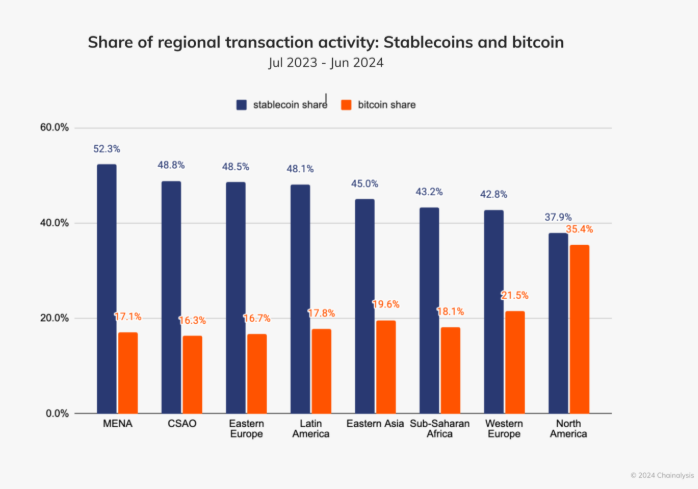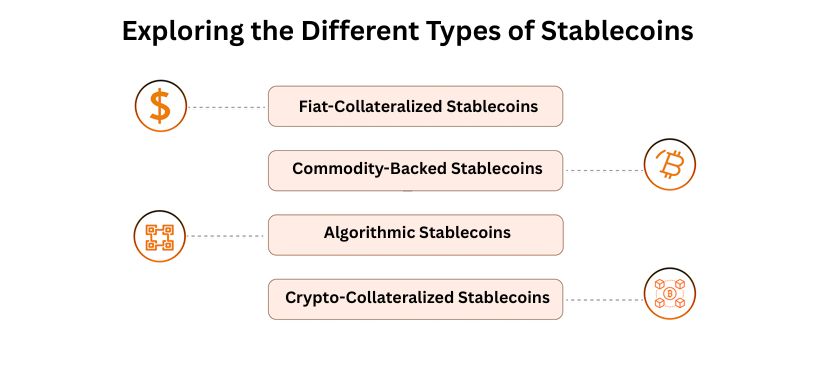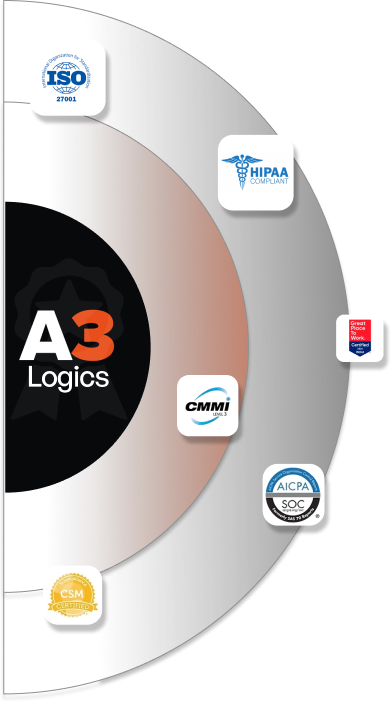Recently, we have seen a gradual shift in the economy, especially with the adoption of cutting-edge digital currencies giving the rise to Stablecoins, the perfect blend of digital currency with stability similar to traditional money. These innovative digital assets function using advanced algorithms or anchoring on reserves.
Creating a Stablecoin can present a lot of new opportunities for your business. This plan can likely work out if you are a crypto enthusiast or blockchain developer. Partnering with professional Stablecoin developers can help you understand your vision and build the best Stablecoin that adheres to the volatile market conditions.
This guide will help you understand everything you need to know about building a Stablecoin while meeting the regulatory standards and managing optimal performance.
Table of Contents
Key Statistics in Stablecoin Development
Here are some of the key statistics that you must know before you choose to create a Stablecoin:
- The year-over-year (YoY) Stablecoin growth exceeds 40% in the retail industry around Sub-Saharan Africa and Latin America, making it the fastest-growing one. (Chainalysis)
- The current market cap of Stablecoins is around $221.94B, indicating -0.00% daily change. (Forbes)
- USDC Stablecoin surpassed an all-time high supply on March 26, 2025, reaching around $60 billion market cap. (The Block)
- The top 5 Stablecoins in the market include Tether, USDC, Ethena, Dai and First Digital USD. (Kraken)

The Benefits of Building a Stablecoin
By creating a Stablecoin you can facilitate seamless and easier transactions. It acts as a reliable medium for the exchange of unaffected volatility, like that of cryptocurrencies. Professional Stablecoin development services can determine the long-term growth of a business.
Some of the key benefits to build a Stablecoin are as follows:
- Standard Form of Payment: Stablecoins are a safe choice for cryptocurrency owners. They can be used as trade currencies without the involvement of financial institutions. The stablecoins can easily be given to gold or any other commodity, such as FIAT currency.
- Easy payments: Stablecoins facilitate easy regular and peer-to-peer transactions. They are transparent coins that can be independently deployed safely while adhering to financial protocols. Moreover, complete transparency is maintained for all payments.
- Cryptocurrency exchanges: There are many strict laws surrounding cryptocurrencies. Creating a Stablecoin with the help of the right stablecoin development company can easily ensure cross-border payments, eliminating the need to change currencies.
- Decentralized finance (DeFi): Stablecoin is also used for DeFi purposes, such as trading, yield farming, and lending.
- Accessibility: Stablecoins are one of the most accessible assets, irrespective of financial status or location. You can use it as long as you are connected to the internet. Furthermore, Stablecoins also offers financial services to people who don’t have banks.
Therefore there are so many use cases of creating a Stablecoin that can benefit businesses. Apart from price stability, technical benefits like regulatory compliance and security must also be considered.
It is important to partner with experts who are aware of the benefits that different types of stablecoins offer for the business. This simplifies the stablecoin development process and also plays an important role in the growth of revenue for businesses.
Exploring the Different Types of Stablecoins
Various assets make stablecoins stand apart from cryptocurrencies or fiat money which are dependent on the currency value. There are different types of stablecoins to choose from. To find the right one for you, you will have to understand the various types available in the market to build a Stablecoin. Some of the common types of Stablecoins present in the market are as follows:

Fiat-Collateralized Stablecoins
For the fiat-collateralized stablecoins, the collaterals are the Euro, Japanese Yen, and the US dollar. The issuer of these types of Stablecoins can retain a specific or equivalent amount of the fiat currency in their bank account. The currency can also be stored in another safe space for retaining its worth. On an average, USD is the most used fiat currency for the fiat-collateralized stablecoins.
Crypto-Collateralized Stablecoins
As for the crypto-collateralized Stablecoins, Bitcoin, Ethereum or cryptocurrencies make up the dominant half of stablecoins. The primary purpose of building a stablecoin backed by cryptocurrencies is that it retains the overall value of stablecoin. At the same time, the issuer gets to keep a similar amount of cryptocurrency in development upon the smart contract.
Algorithmic Stablecoins
Maintaining the stability of Stablecoins is exceptionally crucial. Therefore, Algorithmic Stablecoins use smart contracts and algorithms. This facilitates regulating the supply of Stablecoins. However, the supply is in accordance with the demand for these in the market. This plays a vital role in maintaining the steady price of Stablecoins.
Commodity-Backed Stablecoins
Specific Stablecoins can be backed by commodities such as gold or oil. Like fiat and crypto solutions, the issuer of commodity-backed Stablecoins retains an equivalent amount of the commodity in safe storage. When you create a Stablecoin, these commodities can also be stored in another safe space to retain the value.
Although new to the market, stablecoins come in different types and can offer many benefits. The cryptocurrency space constantly evolves, so a Stablecoin development company can help build the best one while adhering to market standards and regulations.
How to Create A Stablecoin?
Creating a Stablecoin can be a slightly complicated process. Therefore, it is essential to partner with the best Stablecoin development services that can offer maximum results. The developers must completely understand blockchain technology and economics so that Stablecoin adheres to all guidelines.
The basic steps to build a Stablecoin are as follows:
Define Your Stablecoin Model
As mentioned above, different types of Stablecoins are available in the market. Before you build a Stablecoin, you must identify the model you want to adopt. Identifying your goals and objectives is essential to choose the best model.
To identify the goals and objectives, you should consider the following:
- The anticipated level of liquidity.
- The number of audits to be managed ensures the coin’s stability.
- What type of architecture do you consider?
Select the Blockchain Platform
Earlier, Stablecoins were allowed to be launched on Ethereum. However, that has now changed. While Stablecoins were initially introduced between 2016 and 2018 on Ethereum, they can now be built on other platforms, too. Some prominent platforms that support Stablecoins and you can choose from are Binance Smart Chain or Solana.
Before choosing a specific Blockchain platform, stability, security, and development fees must be considered. Comparing the features of different platforms can help you make the right choice and contribute to determining the stability of coins.
Develop Smart Contracts
Smart contracts are crucial to build a Stablecoin. These self-executing programs eventually govern Stablecoin’s operations. However, developing Smart Contracts can be a complex procedure. For this reason, you must hire professional Smart Contract development services.
While choosing Smart Contract development services, you must ensure that they understand Stablecoin’s issuance, redemption, and stability mechanism. Furthermore, it is crucial to measure and audit Smart contracts after development. Auditing ensures that the Smart Contracts are secure and free from bugs.
Collateralization & Reserve Management
To create a Stablecoin with collateral assets, you must first consider the different types of collateral. The development services can explain the different collaterals and help you make the right choice.
If you are building collateralized currency, you must secure equivalent collateral. On the other hand, if you are building fiat-based, a comparable amount of fiat currency must be reserved.
Implement a Price Stabilization Mechanism
Ensuring that the Stablecoin maintains a consistent value is crucial. Therefore, you must integrate proper price stabilization management. Pegging and rebalancing strategies often play a key role in maintaining Stablecoins’ values and keeping them in compliance with the target asset or currency.
Pegging methods refer to particular methods for determining the value of Stablecoins compared to an asset or currency. These methods can be fiat, crypto, or commodity pegging. In each of these methods, stability is either managed through a 1:1 ratio (fiat), equivalent (commodity), or smart contracts (cryptocurrency).
Rebalancing strategies, however, require effectiveness to determine significant value. If rebalancing strategies are not integrated when building a Stablecoin, its credibility and number of users can decrease. Collateral management, automated supply management, and market interventions are the best rebalancing strategies adopted for Stablecoin development solution.

Legal and Regulatory Compliance
Strong legal and regulatory compliance is crucial to fostering stablecoins’ adaptability. Creating a decentralized autonomous organization (DAO) can be extremely beneficial, especially for automating decision-making across smart contracts. As it fosters transparency, it will also cater to organizations’ legal and regulatory compliance.
When creating a Stablecoin, integrate regulatory compliance, too. This plays an important role in maintaining its success and reputation. It is advisable to become familiar with the different regulations governing Stablecoins, such as financial oversight, reporting obligations, and registration.
During creation, you should connect with legal professionals who can understand your requirements and embed the compliance measures to maintain the Stablecoin operations. This will help reduce legal risks while determining the long-term stability and integrity of Stablecoins.
Security Audits
Once you reach the final stages of creating a Stablecoin, you should perform security audits. During this phase, you will likely find several flaws and bugs, so it is advisable to resolve them before the final launch.
Security audits can help identify all vulnerabilities. Monitoring during security audits helps make the necessary changes and overcome potential security threats.
Integration & Testing
Thorough testing of Stablecoins is crucial after running security audits and before integrating them. Testing when you build a Stablecoin helps ensure that stablecoins operate as intended and under different scenarios.
The testing can be performed using Smart Contract audits and simulating them in different market conditions. A comprehensive smart contract audit will help identify any potential threats or vulnerabilities in Stablecoins.
Moreover, testing under different market conditions can also help check for crashes and spikes across transactions. Fine-tuning the stability mechanism will help overcome the challenges and ensure the stablecoins function per real-world solutions.
Community Building and Marketing
After the launch begins community building and marketing. Once you have built the Stablecoins, launch them in the market according to the chosen Blockchain platform. Moreover, marketing Stablecoins across different platforms will help increase user adoption.
Regular maintenance is also required for community building. This ensures that any upcoming bugs are easily resolved and the value is stabilized and maintained, which will attract more users.
Creating a Stablecoin requires Blockchain development expertise. It is a complicated process involving an understanding of finance and economics. Therefore, it is advisable to seek expert advice before making a final choice.
Stablecoin Development: Challenges and Solutions
While creating a Stablecoin has numerous benefits, it does come with a set of challenges. From technological requirements to stability, everything needs to be considered. Some of the key challenges you may face during Stablecoin development are as follows:
- Regulations: The regulatory landscape is slightly complex, and navigating it can be challenging. For stablecoins to be accepted, ensuring compliance with financial regulations is important.
- Security: Like any other digital asset, stablecoins are prone to security threats. Partnering with a professional Stablecoin development company must ensure adhering to security standards and regular auditing to prevent the risk of fraud.
- Stability: When building a Stablecoin, it is important to ensure the peg is maintained. Integrating strong mechanisms within the industry can help manage collateral while keeping up with market changes.
It can be challenging to create a Stablecoin, but it is important to overcome technical glitches. Therefore, reach out to professional Blockchain development services that can help you overcome these challenges.
Successful Examples of Stablecoins
You must hire a cryptocurrency wallet development company that understands your needs to build a Stablecoin successfully. In the past few years, some of the Stablecoins that have taken over the market include the following (in no particular order):
- Dai (DAI): Market cap of $5.37 billion
- USDC (USDC): Market cap of $59.46 billion
- Tether (USDT): Market cap of $143.5 billion
- PayPal USD (PYUSD): Market cap of $777.70 million
- First Digital USD (FDUSD): Market cap of $2.46 billion
*The numbers are subject to change as per market fluctuations.
Why are Stablecoins the Future of Digital Finance?
Over the years, Stablecoins have proven to be one of the most important tools across the cryptocurrency ecosystem. The market capitalization for Stablecoins in 2022 was $180 billion. However, in 2024, it was valued at just a little over $150 billion. By 2030, the market value of Stablecoins is expected to reach $10 trillion with the Stablecoin ecosystem constantly evolving. Therefore, businesses looking to build a Stablecoin to ensure their growth too. Considering the existing inefficiencies in the global payment systems, industry leaders believe that Stablecoins can help to solve the challenges.
Huge players in the digital finance sector, like PayPal, are betting on Stablecoins. Therefore, we may soon witness the emergence of a new way of money movement globally. As the technology develops, more opportunities are likely to be unlocked with the Stablecoin development solution.
Stablecoin Development Company: Launch Your Coin Today
Expert Stablecoin developers from A3Logics can help you launch your coin. Partner with experts to build a Stablecoin and launch it in the market. The best stable coin development company will customize the settings for your business and create a strategy for business. When choosing the company, it is advisable to ensure that they can integrate next-generation, asset-backed development services to build a growth-centric Stablecoin.

Conclusion
Stablecoin, undoubtedly, is the future of finance. The unique blend of traditional asset stability with blockchain technology efficiency is playing an important role in the growth of Stablecoins. You must create a Stablecoin as a unique, innovative solution in this digital economy. However, while building these coins, it is also important to stay updated with the latest trends. This plays a key role in leveraging the full potential, while also driving growth for your business. So, make sure to hire Blockchain developers from A3Logics who promise to bring in results.





